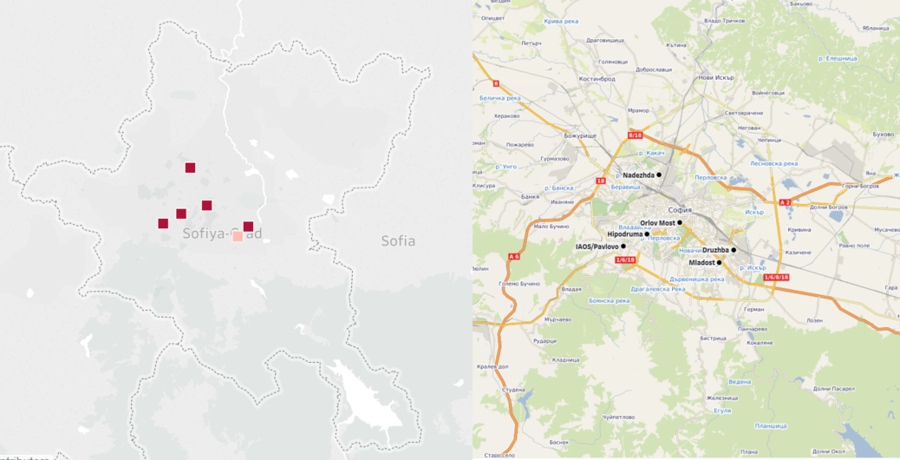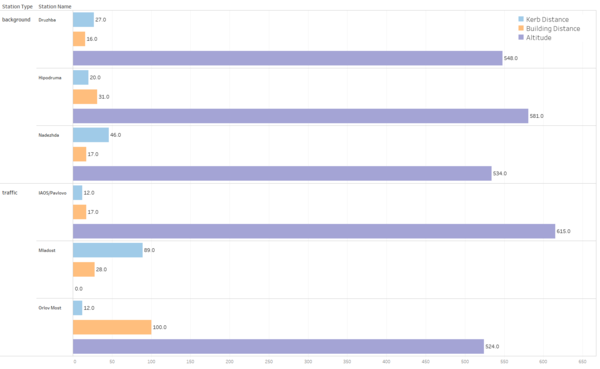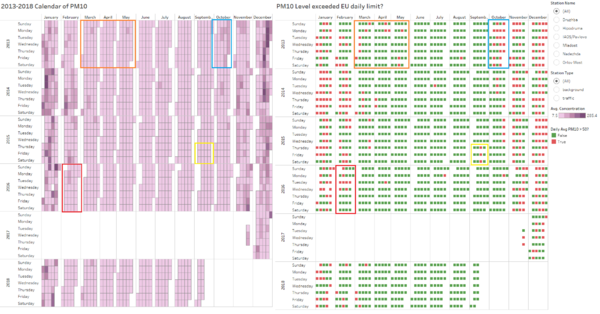Difference between revisions of "ISSS608 Assign Pu Yiran-Task 1"
| Line 53: | Line 53: | ||
</font> | </font> | ||
| − | ==<font face="Book Antigua"; size=5>'''Insight 1'''</font>== | + | ==<font face="Book Antigua"; size=5>'''Past vs. Recent'''</font>== |
| + | =<font face="Book Antigua"; size=4>'''Insight 1 - Look into Calendar'''</font>= | ||
| + | [[File:Task1 003.png|600px|right]] | ||
| + | <font face="Modern", size=2> | ||
| + | <br> | ||
| + | Although Bulgaria is said to be one of the most polluted country in Europe, throughout a whole year, the concentration of PM10 is not always high. Typically, among 12 months, January, Febuary, November and December are the heaviest polluted, especially January and December. However, the rest months have much lower daily average concentration of PM10. This fact can be identified from the calendar view below, where the depth of colour represents the daily average concentration of PM10. | ||
| + | <br> | ||
| + | <br> | ||
| + | Calendar gives a general view of air pollutant across months, and by filtering, we can look into each station or station type, but horizontal comparisons need other visualizations.</font> | ||
Revision as of 01:34, 16 November 2018
|
|
|
Task 1 |
|
|
Get to know about 6 air quality stations
Three stations—Druzhba, Hipodruma and Nadezhda are categorised as ‘Background’, which means the stations are located where the pollution levels represent the average exposure of the general population within the area under assessment. The pollution levels near these three stations are not dominated by a single source type (e.g. traffic), but more related to residences’ daily life.
On the contrary, the other three station—IAOS, Maldost and Orlov are categorized as ‘Traffic’, which indicates that in these areas, the pollution level of PM10 is determined predominantly by the emissions from road traffic. (http://dd.eionet.europa.eu/vocabulary/aq/stationclassification/view)
Six stations are located at central region of Sofia city, with different building distance, kerb distance and altitude, which is displayed in the right picture and below.

By creating some visualization, it is observed that:
1) Station Nadezhda (BG0040A) has missing data of the entire July 2016.
2) Only data of November and December are given for 2017.
3) Station Orlov Most (BG0054A) only provides data of 2013, 2014 and 2015.
4) Station Maldost (BG0079A) only provides data of 2018.
Past vs. Recent
Insight 1 - Look into Calendar
Although Bulgaria is said to be one of the most polluted country in Europe, throughout a whole year, the concentration of PM10 is not always high. Typically, among 12 months, January, Febuary, November and December are the heaviest polluted, especially January and December. However, the rest months have much lower daily average concentration of PM10. This fact can be identified from the calendar view below, where the depth of colour represents the daily average concentration of PM10.
Calendar gives a general view of air pollutant across months, and by filtering, we can look into each station or station type, but horizontal comparisons need other visualizations.


